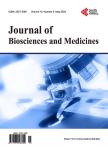Analysis of Pyelonephritis-Associated Beta Hemolytic Streptococcus in Japan
Analysis of Pyelonephritis-Associated Beta Hemolytic Streptococcus in Japan作者机构:Department of Bacteriology Graduate School of Medical Sciences Nagoya City University Nagoya Japan Department of Clinical Laboratory Japanese Red Cross Nagoya Daiichi Hospital Nagoya Japan Department of Clinical Laboratory Japanese Red Cross Nagoya Daini Hospital Nagoya Japan School of Nursing Sugiyama Jyogakuen University Nagoya Japan
出 版 物:《Journal of Biosciences and Medicines》 (生物科学与医学(英文))
年 卷 期:2018年第6卷第12期
页 面:45-52页
学科分类:1002[医学-临床医学] 100214[医学-肿瘤学] 10[医学]
主 题:Beta Hemolytic Streptococcus Pyelonephritis S. agalactiae S. dysgalactiae subsp. equisimilis Antimicrobial Susceptibility
摘 要:Pyelonephritis is an inflammation of the kidney tissue, calyces, and renal pelvis. It is commonly caused by bacterial infection that has spread up the urinary tract. Common bacteria are Escherichia coli and Enterococcus faecalis. Beta hemolytic streptococci also cause pyelonephritis. Beta hemolytic streptococcus such as Streptococcus agalactiae, and S. dysgalactiae subsp. equisimilis, when grown on blood-agar, produce complete hemolysis around each colony, usually cause severe infections including many cases of cellulitis, pneumonia, meningitis and sepsis. However the analysis of pyelonephritis causing beta hemolytic streptococcus has seldom been investigated. In this study, we tried to clarify the relationship between beta hemolytic streptococcus and pyelonephritis patient in Japan. We investigated beta hemolytic streptococcus isolated from pyelonephritis patient at two tertiary care hospitals in the central region of Japan by analyzing the background and antimicrobial susceptibility of beta hemolytic streptococcus. We recovered total sixteen beta hemolytic streptococcus in nine years. In pyelonephritis patients, beta hemolytic streptococcus was isolated from 9 S. agalactiae and 7 S. dysgalactiae subsp. equisimilis, respectively. The numbers of streptococci from female patients were more than those from male patients. Bacteria were not isolated from under 30 year patients. All S. dysgalactiae subsp. equisimilis were isolated from 60-year-age patients. About one fifth of beta hemolytic streptococcus had erythromycin and minocycline-resistant ability. Four beta hemolytic streptococci that were all S. agalactiae, had levofloxacin-resistant ability. Only one S. agalactiae had trimethoprim-sulfamethoxazole-resistant ability. Ampicillin was effective against all beta hemolytic streptococci. In our results, beta hemolytic streptococcus caused pyelonephritis in aged people and the quarter of these bacteria had some antibiotics resistance.



